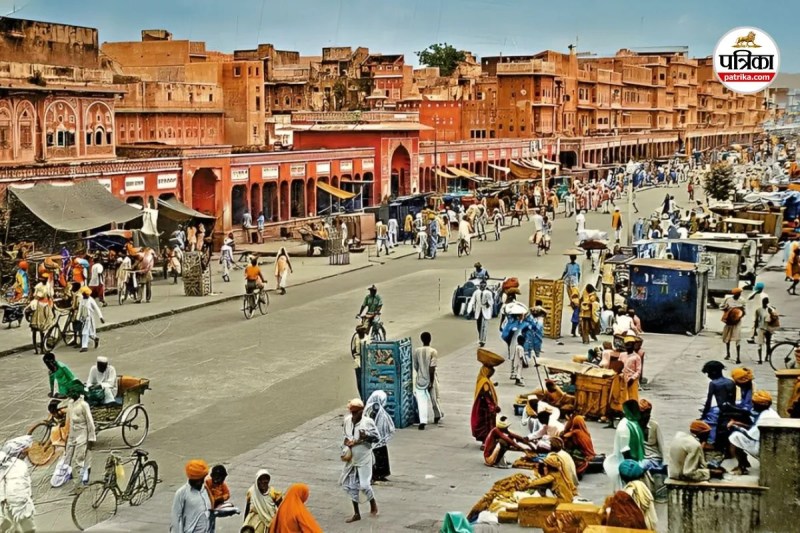
Image: Patrika
Diwali Special: What a Diwali it was… In a serene atmosphere, colourful streams of light from countless lamps used to cascade down palaces, mansions, temples, forts, and citadels. Today, in the modern era, Diwali is celebrated with more fanfare than before. However, the sense of public joy that existed then seems to be lost somewhere today.
In many princely states of Rajasthan, including Jaipur, the festival of Diwali was celebrated following the ancient traditions of Ayodhya, the capital of Lord Rama. During that era, preparations for Diwali would begin right after Sharad Purnima.
In the royal courts of the princely states, on the day of the main Diwali, the then kings and maharajas would wear black attire and perform Diwali puja with the queen in the palace. The melodious sound of nagaras and shehnais would be heard at the city gates. For the Diwali puja, sacred water from 27 wells and soil from elephant stables were collected.
In the Jaipur princely state, after worshipping Govardhan and performing Baliraj puja, the Maharaja, clad in black attire, would ride a black horse. Holding a sword in one hand and reins in the other, he would pass under the grass roti (bread) hanging at the fort gate. To wish for the prosperity of the subjects, a procession of Lord Vishnu, known as Margapali, would take place on the second day of Diwali.
The Maharaja, seated on an elephant, would ride through the city to extend Diwali greetings to the public. The chariot of Lord Sita Ramji would lead the procession. Saints and Mahants from religious seats like Galta and Balanand Ji would participate in the procession, seated in palanquins.
Kings and Maharajas would visit other princely states as guests to witness their Diwali celebrations. Once, Maharaja Ganga Singh of Bikaner and, after independence, Congress leader Devi Shankar Tiwari attended the court during the Diwali of 1951.
According to one record, on the Diwali of November 8, 1942, lamps were lit using two maunds and eight seers of oil. On the day of Govardhan Puja, cows, bulls, and calves were worshipped after applying oil and ochre to their horns. In Jaipur, the magic of the unique skills of the 'shorgars' (firework makers) seemed to reach for the sky.
Employees who performed exceptionally well in the princely estates were honoured in the Diwali court. Historian Dr. Raghvendra Singh Manohar has written that on Diwali, the then Maharana of Mewar would hold a court in Nagina Badi. There, attending chieftains and others were presented with sugarcane coated in black gum. Jaipur had a royal Diwali court. During Lakshmi Puja in Chandramahal, the king and queen would perform the ritual of 'dhrit kreeda', or gambling. In Jodhpur, a grand feast was hosted by the Maharaja on Diwali.
Published on:
18 Oct 2025 06:25 pm
Big News
View AllPatrika Special
Trending

